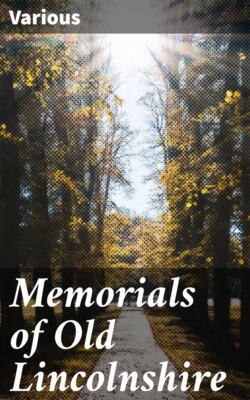Читать книгу Memorials of Old Lincolnshire - Various - Страница 24
На сайте Литреса книга снята с продажи.
Bronze Age Burials
ОглавлениеTable of Contents
We have already referred to two classes of barrows or burial places. One is described as a long barrow, the other as a round barrow.
It is in this latter class of burial place that the people of the Bronze Age buried their dead.
The round barrows belong to another race of people who existed in Lincolnshire, and are described as Brachy-cephalic or round-headed people.
In these burial places bronze implements have sometimes been found, and occasionally stone implements, showing that the Stone Age overlapped or ran into the Bronze Period.
Incompleteness of the circle in the barrow points to design.
An alphabetical list of the places where in recent times the round barrow existed is as follows:—
Barrow.
Bardney.
Brigg.
Burgh.
Burgh-on-Bain.
Burnham.
Bully Hills, 6.
Claxby by Alford.
Cockerington.
Cleasham.
Donington-on-Bain.
Falkingham.
Gainsborough.
Halton, West.
Haugham.
Horncastle.
Ingoldsby.
Kelstern.
Langton by Spilsby, 3.
Revesby.
Riseholme.
Spellow Hills.
Temple Bruer, 2.
Wainfleet, 2.
Walcot.
Well near Alford, 3.
Welton in the Marsh.
Wold Newton, 20 urns.
The barrow was considered to be the habitation of the spirits of the dead.
In the Bronze Age often the body was burnt wholly or in parts. Sometimes the ashes were collected and placed in an urn. This burning of the body seems to have been one of their sacred rites of burial. In nearly every case where the body has been burnt, holes seem to have been bored or drilled into the ground underneath the body. Sometimes these were stake holes, but the wood has perished. In these barrows was buried the chief of the clan or tribe.
A plate picture of the different kinds of skulls of the Dolicho-cephalic and the Brachy-cephalic people appears in the British Museum Handbook to the Antiquities of the Bronze Age, page 20.
It is considered very probable that the round-headed people were the conquerors of the long-headed race.
